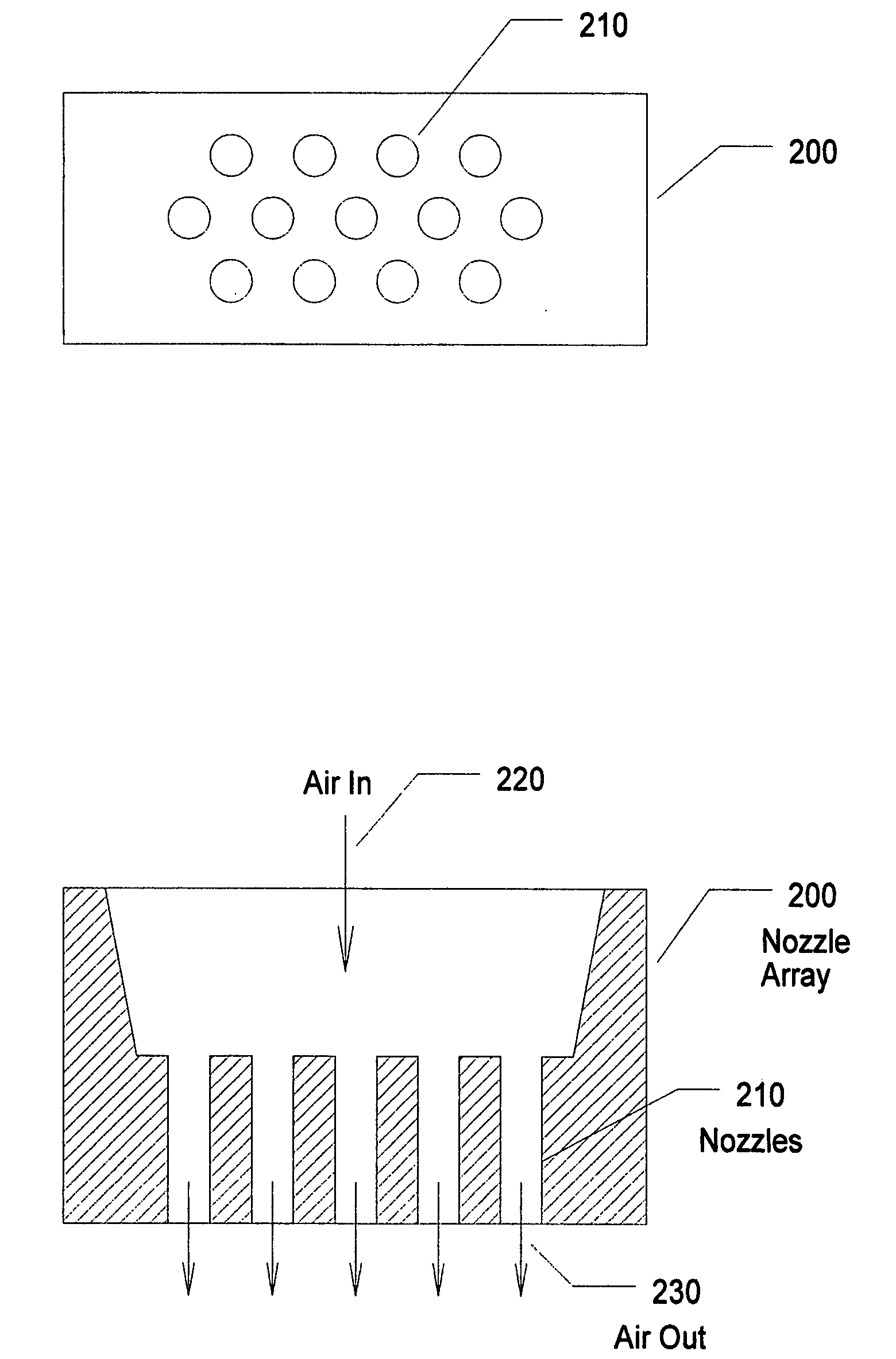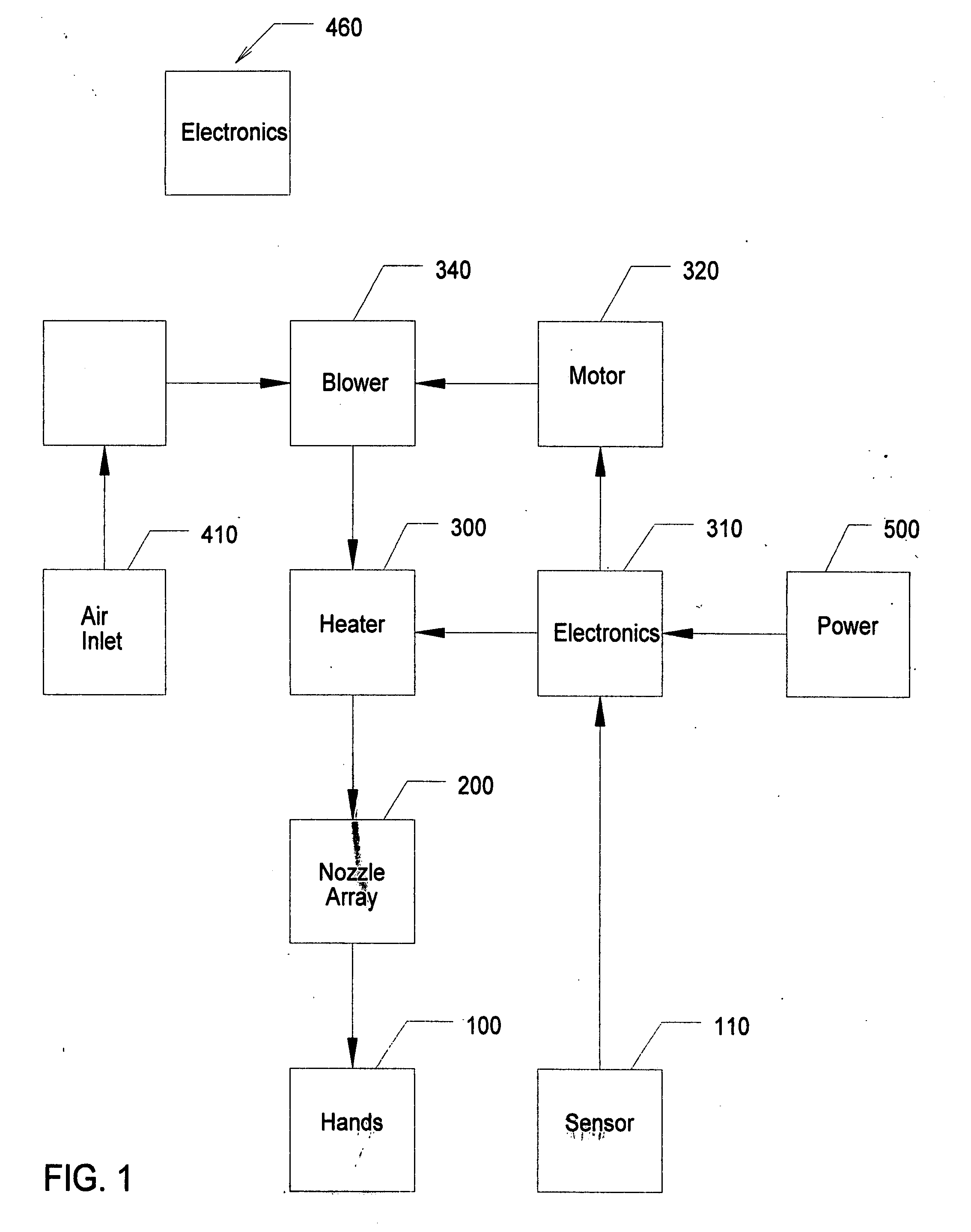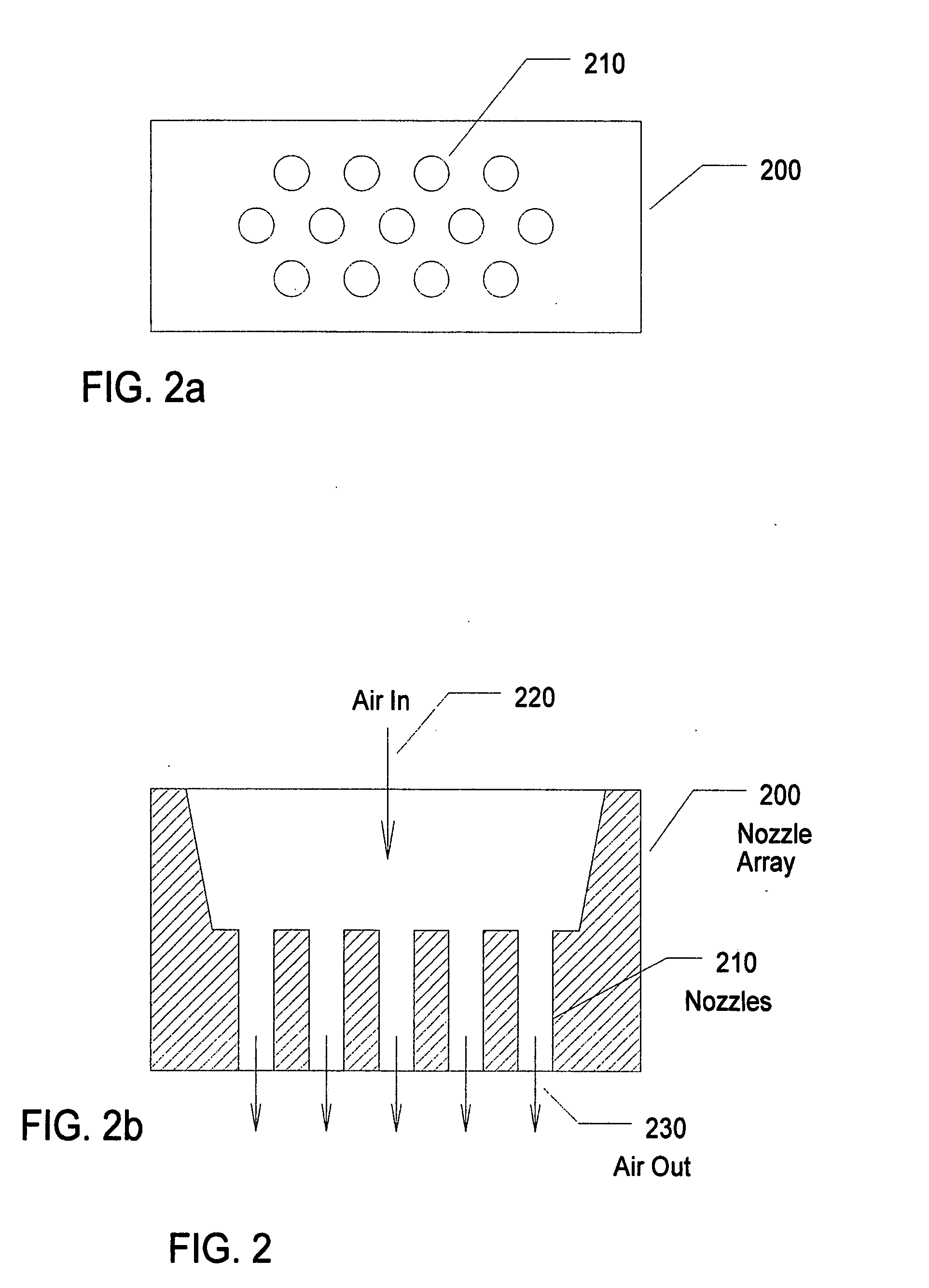Hand dryer
a dryer and hand technology, applied in the field of hand dryers, can solve the problems of increasing energy consumption, requiring more energy and time, and evaporative drying requires this additional time, so as to reduce air impact noise, less noise, and dissipate impact energy
- Summary
- Abstract
- Description
- Claims
- Application Information
AI Technical Summary
Benefits of technology
Problems solved by technology
Method used
Image
Examples
embodiment
Preferred Embodiment
[0081]A preferred version of our dryer has a compound directional nozzle containing multiple cylindrical air exit sub-nozzles with spacing between the cylindrical sub-nozzles. This reduces the measured hand impact noise produced by the turbulence of the individual air streams on the hands. For the case of spacing between the fast air streams there is a shorter path for the high velocity air at the impact location to escape to a region with less airflow, and less turbulence. For dryers that use fast streams of air for drying, the noise produced when the fast flowing air impacts the surface to be dried, can be high enough to disturb the user or even others in adjacent locations. In one version of our dryer, the compound directional nozzle consisting of multiple, parallel tubular exit sub-nozzles are used to result in reduced noise that would be produced when a fast air jet impacts on surfaces.
[0082]The multi-jet design allows for tilting jets to different angles of...
PUM
 Login to View More
Login to View More Abstract
Description
Claims
Application Information
 Login to View More
Login to View More - R&D
- Intellectual Property
- Life Sciences
- Materials
- Tech Scout
- Unparalleled Data Quality
- Higher Quality Content
- 60% Fewer Hallucinations
Browse by: Latest US Patents, China's latest patents, Technical Efficacy Thesaurus, Application Domain, Technology Topic, Popular Technical Reports.
© 2025 PatSnap. All rights reserved.Legal|Privacy policy|Modern Slavery Act Transparency Statement|Sitemap|About US| Contact US: help@patsnap.com



